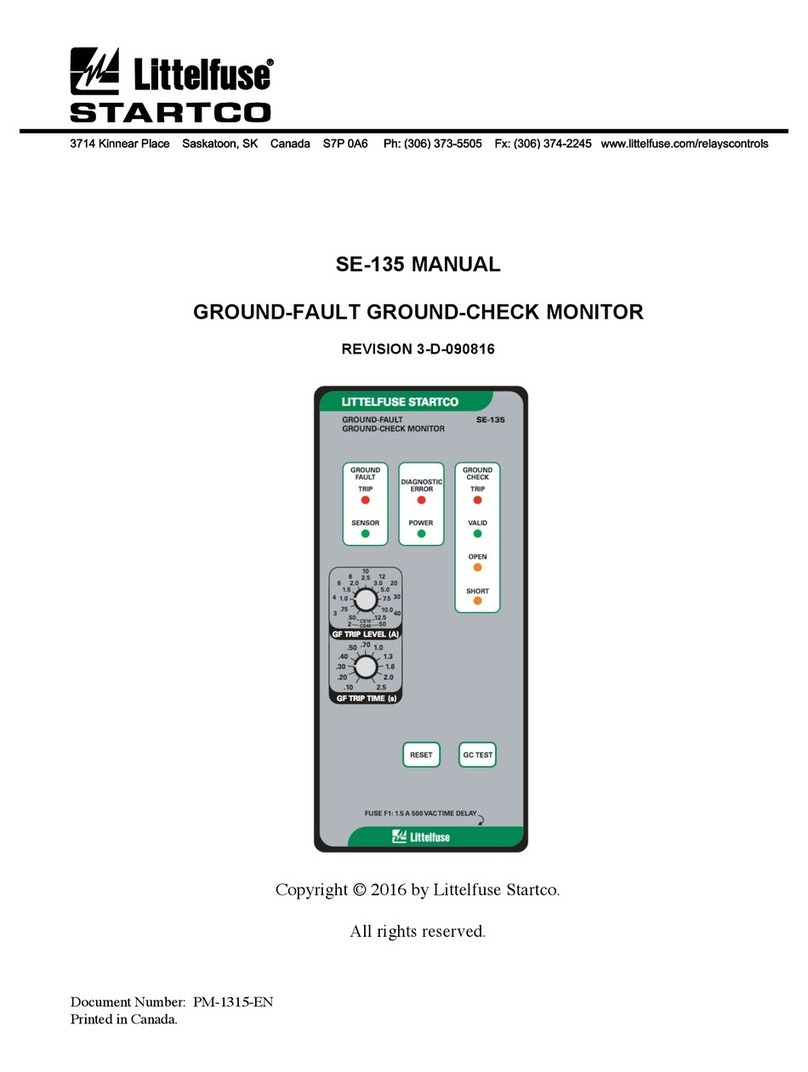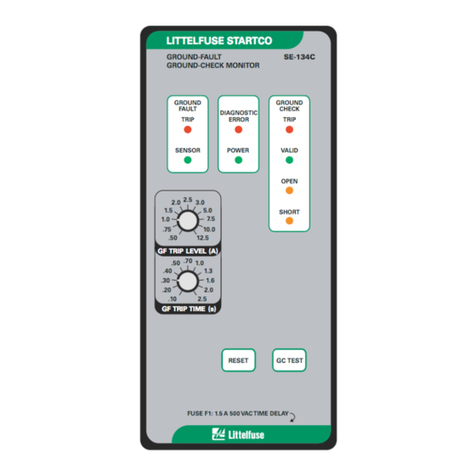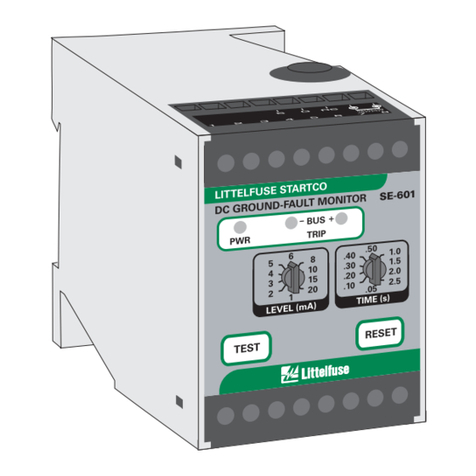
Page 1
SE-330 Neutral-Grounding-Resistor Monitor Rev. 9-A-112913
1. GENERAL
1.1 MODERN RESISTANCE-GROUNDED SYSTEMS
A high-resistance-grounded system uses a neutral-
grounding resistor (NGR) with a low let-through current
to limit ground-fault current. This is an improvement
over low-resistance or solidly-grounded systems because,
in those systems, a ground-fault flash hazard exists and a
ground fault can result in substantial point-of-fault
damage. High-resistance grounding eliminates these
problems and modern ground-fault protection operates
reliably at low current levels. Furthermore, the
probability of an arc-flash incident is significantly
reduced in a high-resistance-grounded system.
NGR selection depends on system charging current and
whether the system is an alarm-only or a tripping system.
Alarm-only systems are usually restricted to system
voltages up to 5 kV with NGR let-through currents of 5 A
or less. Occasionally, alarm-only systems up to 15 kV
and up to 10 A are used; however, they are not common
because a ground fault on such a system tends to escalate
to a phase-to-phase fault before the ground fault can be
located and cleared.
System charging current is the capacitive current that
flows to ground when a bolted ground fault occurs. This
current can be calculated or measured. For small systems,
the magnitude of charging current can be conservatively
estimated as ½ A per 1,000 kVA on low-voltage systems
and 1 A per 1,000 kVA on medium-voltage systems.
In an alarm-only system or in a tripping system without
selective coordination, choose an NGR with a let-through
current larger than the system charging current and set the
pick-up current of ground-fault devices at or below 50%
of the NGR let-through current.
In a tripping system with selective coordination, use
ground-fault devices with a definite-time characteristic to
achieve time coordination. Use the same pick-up current
for all ground-fault devices—this value must be larger
than the charging current of the largest feeder. Select an
NGR with a let-through current between five and ten
times the pick-up current of the ground-fault devices.
Do not use a grounding transformer with a low-voltage
resistor:
The combined cost of a transformer and a low-
voltage resistor is more than the cost of a resistor
rated for line-to-neutral voltage.
A transformer saturated by a ground fault through a
rectifier can make ground-fault protection
inoperative.
Transformer inrush current up to twelve times rated
current can cause a ground-fault voltage larger than
expected.
A parallel transformer winding makes it difficult to
monitor NGR continuity.
A transformer can provide the inductance necessary
to cause ferroresonance if the NGR opens.
Following these guidelines will reduce the flash hazard,
reduce point-of-fault damage, achieve reliable ground-
fault protection, and ensure a stable system not subject to
ferroresonance.
1.2 SE-330 NGR MONITORING
The SE-330 is a microprocessor-based neutral-
grounding-resistor monitor that detects NGR failures and
ground faults in resistance-grounded systems. The
SE-330 measures NGR resistance, NGR current, and
transformer or generator neutral-to-ground voltage. The
components required to monitor an NGR are an SE-330, a
20- or 100-kER-series sensing resistor, and a current
transformer (CT).
Power-circuit elements, other than neutral-connected
NGR’s, that purposefully connect the power system to
ground are often not compatible with SE-330 NGR
monitoring. These elements include single-phase
grounding transformers, grounded-wye-primary PT’s, and
grounded-wye-primary power transformers.
The SE-330 continuously measures NGR resistance in
an unfaulted system, and it will trip on resistor fault if
NGR resistance varies from its calibrated value. When a
ground fault occurs, voltage is present on the neutral and
NGR current will flow if the NGR is healthy. The
SE-330 will trip on ground fault if fault current exceeds
the GF TRIP LEVEL setting for an interval equal to the
GF TRIP TIME setting. However, if the NGR fails open
during a ground fault, it is possible for fault resistance to
satisfy the NGR resistance measurement. To detect this
double-fault condition, the SE-330 measures neutral
voltage. If neutral voltage exceeds the VNTRIP LEVEL
setting, and if NGR current is less than 5% of the CT
rating, the SE-330 will trip on resistor fault. If the
resistor-fault circuit is tripped and the neutral voltage
exceeds the VNTRIP LEVEL setting for an interval
greater than the GF TRIP TIME setting, the ground-fault
circuit will also trip.
Ground-fault current is sensed by a CT with a 1- or 5-A
secondary, or by a sensitive CT (EFCT-x or
SE-CS30-x) with a 50-mA secondary. The trip level of
the ground-fault circuit is adjustable from 2 to 100% of
the CT rating and trip time is adjustable from 0.1 to 10.0
seconds.
The SE-330 has four output relays. Relay K1 can be
assigned a trip or a pulsing function. Relays K2 and K3
provide ground-fault and resistor-fault indication. K4 is a
solid-state relay that provides UNIT HEALTHY
indication. When relay K1 is assigned the trip function, it
will operate on either a resistor fault or ground fault, and
it can be set to operate in the fail-safe or non-fail-safe
mode for undervoltage or shunt-trip applications. When
the pulsing function is selected, relay K1 is used to
control a contactor to assist in fault location.






























